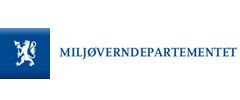ROCA position paper in preparation of the Rotterdam Convention COP 5 (English and Russian)
NGO observers long to see the Rotterdam Convention become the effective legally binding agreement that it should be.
21.06.2011

THE POSITION PAPER CAN BE DOWNLOADED HERE
From hundreds of harmful chemicals being regulated in different countries, to date, only 40 chemicals are subject to the PIC procedure. Although a legally
binding instrument, some of the Rotterdam Convention’s key provisions are being misused by some of the Parties, breaking the long-known international rule of bona fides. Besides, some key provisions of the Convention are not being applied by the Parties, and the absence of control of compliance leads to a never-ending review and assessment of the health and environment hazards of long-known hazardous substances and products.
NGO observers long to see the Rotterdam Convention become the effective legally binding agreement that it should be. The 3rd Conference of the Parties (COP3) in 2006 was the very first time that the Chemical Review Committee (CRC) of the Convention, put forward a recommendation for a substance to be placed on the Convention’s list of hazardous substances. The substance in question was chrysotile asbestos. Hazardous substances had, prior to this, been placed on the Convention’s list in Annex III, but this had been done by voluntary agreement. For example, crocidolite asbestos, actinolite asbestos, anthophyllite asbestos, amosite asbestos and tremolite had all been placed voluntarily on the Convention’s list. These are, however, substances that are no longer traded in the world.
At COP3, a handful of asbestos exporting/using countries, led by Canada and supported by India, Iran, Kyrgyzstan, Peru, and Ukraine refused to allow the CRC’s recommendation on chrysotile to be adopted. At COP4 in 2008, the recommendation of the CRC to list chrysotile asbestos was brought forward once more, together with the recommendation to list tributyltin and endosulfan. Both the recommendation to list chrysotile asbestos and endosulfan were blocked. The decision to block the addition of chrysotile asbestos was this time led by parties from the Eastern European and Central Asian region (in particular Ukraine, Kyrgyzstan). To date, only the recommendation of the CRC to list tributyltin has been implemented.
Further reading....

































